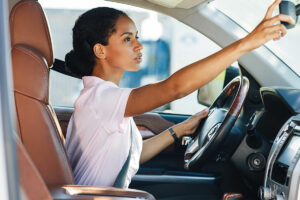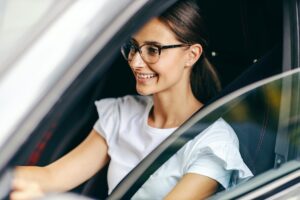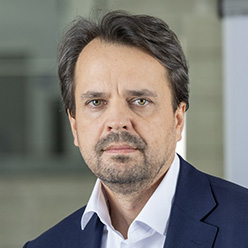It is not unusual for damage to a leased vehicle in the fleet to occur during the leasing period. It is therefore important to have the relevant defects in the vehicle repaired when the lease is returned . But does damage have to be repaired before the vehicle is returned? And what damage is accepted when the lease is returned? We answer these and other questions in our article.
Contents
How does the leasing return work?
At the end of the lease term, the company vehicle is returned to the lessor or an office designated by the lessor. This initially involves a handover, during which the vehicle documents, keys and any accessories such as charging cables or winter tires are handed over.
The condition of the vehicle is then documented by a professional inspection and checked for various defects and damage. This can be done either directly on site or at a specialized inspection centre. The result of the inspection is recorded in a return protocol, which serves as the basis for the conclusion of the contract. Processing the leasing return is one of the most important tasks in fleet management. Fleet management software can support you in planning these appointments.
The condition of the car on return of the lease
Ideally, the vehicle should be in the same condition as agreed in the leasing contract when it is returned. However, this is the exception rather than the rule, as wear and tear is usually visible, especially if the vehicle has been driven for many kilometers, which can also affect the residual value of the vehicle. If the leased vehicle has only been used minimally during the term and is in excellent condition, the vehicle is almost as good as new and usually shows hardly any visible signs of use.
It is generally advisable to inspect the leased car thoroughly before returning it. In addition, a professional vehicle valuation by an independent expert can also be helpful in order to objectively determine the condition of the vehicle.
Lease return: Depreciation due to excessive wear and tear
According to Section 538 BGB (German Civil Code), you as the lessee are liable in the event of excessive wear and tear on the vehicle. It should be noted that this only includes defects in normal use of the vehicle. When assessing the condition of the leased car, the age and mileage are taken into account.
“The tenant is not responsible for changes to or deterioration of the rented property caused by use in accordance with the contract.”
– Section 538 (BGB) Wear and tear of the rented property due to contractual use
It is important to emphasize that you as the lessee do not have to pay for the repair of the defects. Instead, you will only be charged the amount corresponding to the reduction in value of the vehicle due to the defects. These defects must be considered as a whole, as they cannot be assessed individually and added together.

Do you keep an eye on your appointments?
Register with Fleethouse and manage your fleet completely digitally.
Signs of use when returning a lease: What damage must a lessor list as proof?
The lessor is obliged to provide evidence of damage or defects to the vehicle when the lease is returned. As the lessee, you are not obliged to immediately sign the resulting defect or return report from the lessor. It is worth checking the documents thoroughly and, if necessary, obtaining an external assessment of the situation before you sign. Ask for a copy of the signed documents at the end.
But which leasing return damages must be listed by the lessor? Below we show you some of the most common types of damage:
- Scratches and dents: Slight dents on one of the car doors can be considered normal signs of wear and tear when using vehicles. Larger dents and scratches, on the other hand, can be a problem when you return the vehicle to the leasing company. Such damage is often documented in the return report and can result in additional costs.
- Damage to the rims: Kerbs or potholes can lead to scratches, dents or cracks on the rims. However, this damage can also be considered typical signs of use.
- Damaged interior: Soiled or damaged seats, carpets or dashboards can also be assessed as damage to the vehicle at the end of the lease. Stains, tears or holes in the upholstery and deep scratches or signs of wear and tear on the dashboard are particularly common points of complaint in the expert opinion, which lead to a reduction in the residual value.
- Technical problems: If the vehicle has technical defects that go beyond normal wear and tear, the lessor can cite this as damage in the report. These include, for example, problems with the engine, electronics or transmission. Regular maintenance and repairs before the end of the leasing contract can help to avoid such defects and prevent the residual value from being lower.
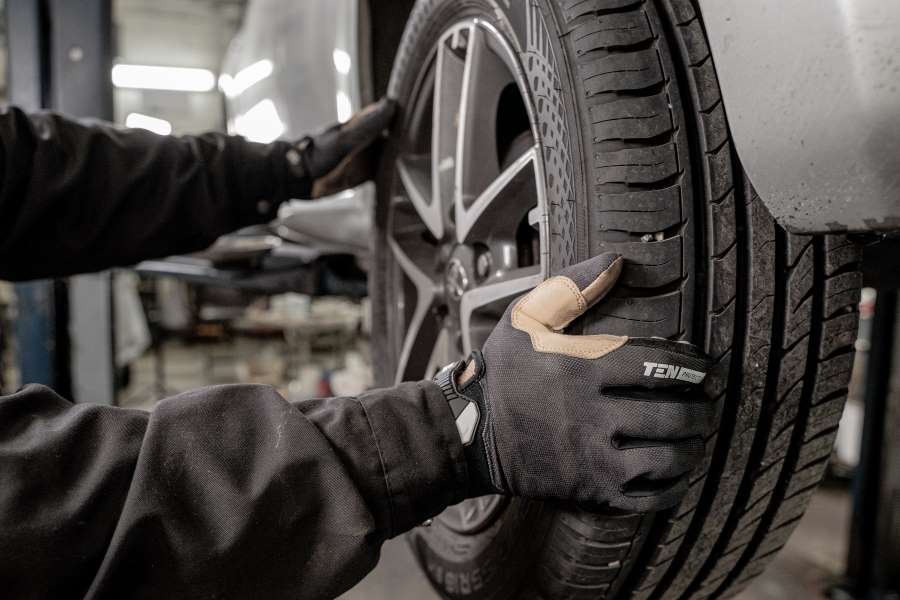
Leasing return: What the lessee must consider
When returning a leased vehicle, there are a few important aspects to consider in order to avoid unpleasant surprises.
- Documentation of the vehicle history: Careful documentation of the vehicle history is essential. The lessee should keep a record of all maintenance and repair work, as well as oil changes and inspections. This not only serves as proof that the vehicle has been regularly maintained, but can also help to identify any damage that needs to be repaired before the lease is returned.
- Vehicle inspection before returning the lease: It is advisable to inspect the vehicle thoroughly before returning the lease. Both external and internal defects such as scratches, dents or damage to the interior should be checked. The lessee can also take advantage of a professional vehicle valuation to obtain an objective condition report.
- Lessor’s return requests: The lessor may impose specific requirements for the return of the vehicle, which are regulated in the contract. These may include, for example, the removal of company logos or advertising stickers, cleaning the car or filling the tank. It is important to observe these agreed requirements and comply with them before returning the vehicle in order to avoid additional costs.
- Documentation when returning the lease: When returning the lease, the lessee should prepare detailed documentation on the condition of the vehicle. Photos or videos can be helpful here. It is recommended that you check the condition of the vehicle together with a representative of the lessor and obtain confirmation of the condition. This can later serve as proof when the vehicle is returned in the event of any discrepancies regarding possible damage to the vehicle.
Leasing return checklist
With the help of our checklist, you will know what to consider when returning a lease.
Leasing return: Loss of value due to accident?
In the event of an accident , the leased vehicle loses value. This has a particular impact on the resale of the vehicle at the dealer, as the dealer must expect lower income. Even after repair and reconditioning, the vehicle remains an accident vehicle and suffers a loss in value. The financial loss is particularly high for high-quality cars and new cars. When it comes to the question of whether the lessee can be held liable for the reduction in value following an accident, a distinction is made between two possibilities:
In the event of hull damage caused by the lessee, the lessee must generally make the compensation payment.
In the event of a liability claim, the vehicle insurance of the other party involved in the accident must pay compensation for the leased vehicle.
It is therefore important to ensure that the leasing contract contains provisions on liability and how to deal with accident vehicles. A clear agreement between the lessee and the leasing company can help to avoid possible disputes in the event of damage and to better assess the financial burden.
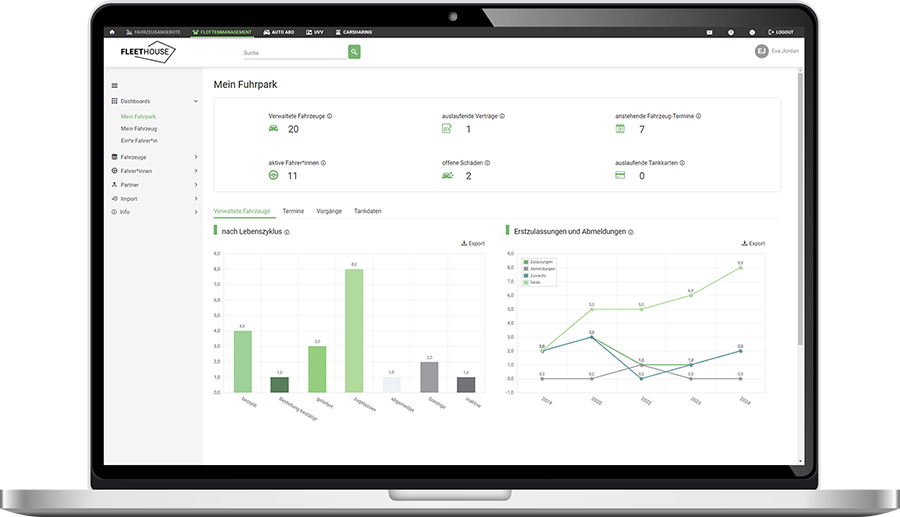
The software for your fleet
FAQ - Frequently asked questions about leasing returns in the event of damage
When returning a lease, the usual signs of wear and tear that occur during normal use of a vehicle are generally accepted. These include, for example, small scratches in the paintwork, slight signs of wear and tear in the interior or minimal stone chips on the front.
Excessive wear and tear includes damage that goes beyond normal signs of use. This includes deep scratches, dents, tears or holes in upholstery, damaged rims, badly worn tires and cracks or stone chips in the windscreen. Technical defects or heavy soiling are also considered excessive wear and tear. Such damage can result in additional costs when returning the lease.
The costs of repairing damage are generally borne by the lessee if the damage goes beyond normal signs of use. This includes dents, deep scratches, technical defects or damaged components. Damage that is considered normal wear and tear generally does not incur any additional costs. It is advisable to repair major damage yourself or have the vehicle professionally reconditioned before returning it in order to avoid possible additional claims.
The most important facts about leasing returns in the event of damage
The lessee is liable for damage that goes beyond normal wear and tear.
An independent appraiser of a leased vehicle is helpful before the leasing return in order to objectively assess the condition of the vehicle and avoid possible disputes about damage.
The documentation of the vehicle history is important in order to provide proof of the condition and maintenance of the vehicle during its lifetime.
Further Fleet Knowledge
If you liked this article and would like to know more about this topic, we recommend these articles.
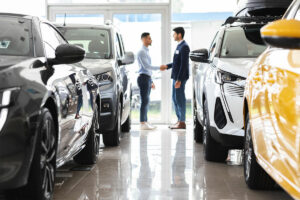
Leasing guide: Important aspects when leasing a company car

Leasing return checklist: How to return a company car
